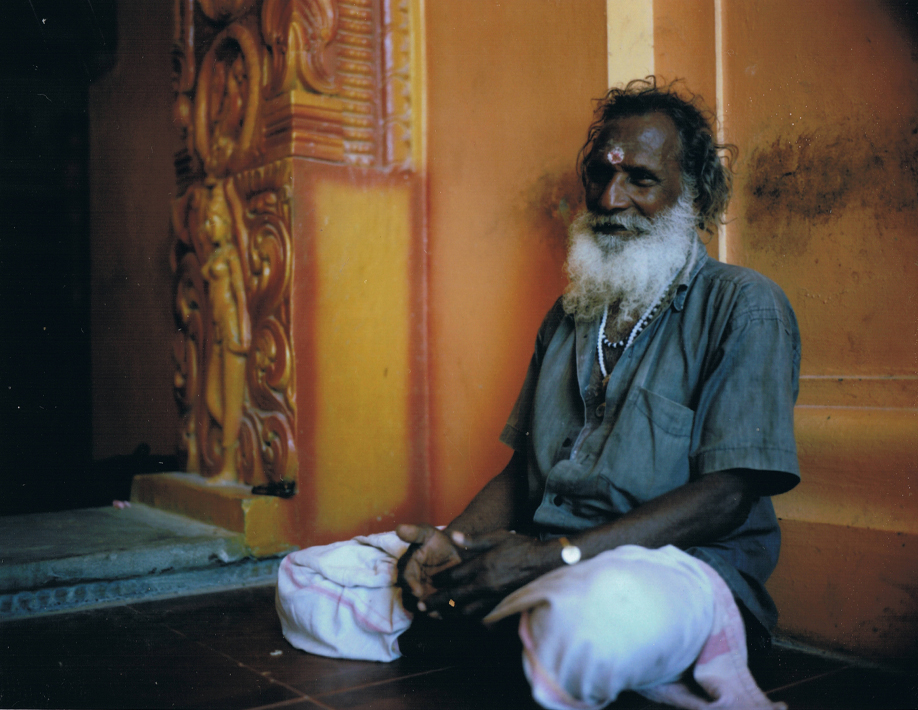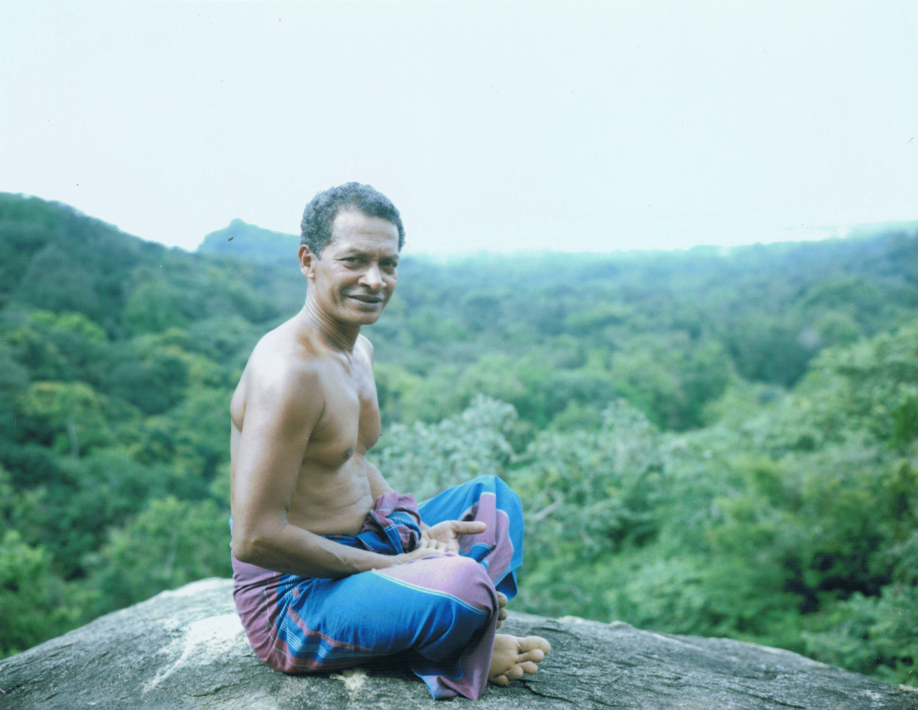I’m one of those photographers who loves to discover a country through its inhabitants, and I prefer to take the time to experience the unknown by sharing their daily lives without following a set travel plan that can be too constraining.
A portrait is more than anything an encounter between two people, the photographer and his or her subject. Now in travel photography, the locals you encounter won’t think of themselves in any way as inspirational, in fact they are light years away from imagining they could be your ideal subject.
Be open and reach out to people
Of course we all know how much a camera pointed at your face or pointed right at your front door can be an unpleasant intrusion. The exact same is true for the inhabitants of places on the other end of the world.
There’s no secret about it: the encounter is of primordial importance. At that point, you’re not talking about photography (your camera is still in your bag), you’re really talking about warm and friendly contact. The first moments are essential because they will determine what happens next in your photographic activities, whether for a few minutes or a few days!
Being able to speak a few words is part of the traveling photographer’s bag of tricks, so some basic phrases are indispensable: “Hello, how are you? My name is…” Of course, you have to be open, cheerful and not flaunt signs of wealth. It’s pretty rare that someone won’t respond to a friendly hello, and so the first contact is created. After that, it’s a little like the lottery. You need to hope that your new friend is also open and that your presence isn’t an annoyance.
How do you choose your “subjects”?
You’re simply interested in that person’s daily world. Whether it’s the person’s work, religion, sporting activity, etc. : there’s something in the person that motivates you to find out more. Showing interest in his culture will always make the local happy, and it is also the chance to try and understand and join daily activities.
I don’t always have a whole day in front of me, and a fruitful encounter can last an hour, but it can also last for days. The corner café may be the perfect spot, or maybe the market, or the artisans’ quarter…
Unforgettable experiences
I firmly believe that a special encounter will always lead to wonderful pictures: they will be rich souvenirs of the experience. The portrait you take is the conclusion to these shared moments and it will forever immortalize the scene.
Of course, I am also observing the surroundings at the same time. My gaze is seeking out textures, colored backgrounds, natural lines, sources of light, natural frames for the composition… Discreetly I think about the perfect setting to showcase my subject. You have to be able to adapt to any environment.
This character you encountered at the end of the world has become a friend, so it is natural to politely ask for a souvenir photo.
Finally, it’s on to the portrait!
The goal is to turn this into a moment of fun to keep it as natural as possible. You don’t want to come off as too serious, while you keep in mind what it is you want. That’s the moment you want to take your camera out of the bag and move your subject where you want him.
You simply need to show your subject what you have in mind (wall or landscape in the background, light source, etc.) and ask him to stand where you want. Often, I’ll utter a few words like “Hollywood studio” or other silly phrases to lighten the atmosphere.
What settings do you use?
The easiest is to use the aperture priority mode (A or Av depending on the model). This mode lets you chose the aperture (that famous f) manually and then control the depth of field of your image (clarity zone). In this mode, the camera will set the speed and ISO.
The more you open it, the more the depth of field will be reduced and more light enters. What that means is that with a small f (1.4 or 2.8 for some lens models), the aperture is large, the clarity zone is small, and the speed is fast (because of the amount of light).
You use a large aperture to pull the subject out and away from the background (which will be blurry). For complete clarity, you simply need to use a small aperture by increasing the value of f on your camera (f/8, f/16…).
Be careful of the focus!
I just told you that with a large aperture, the clarity zone will be reduced. These days, camera auto-focus features are very precise, so you have to be careful with the focus. The classic mistake is to focus on your subject’s nose. I strongly encourage you to concentrate on an eye to get the best results.
The most important: never forget your smile mode!
Just to make sure my life was good and complicated and because I love it, I lugged around an old, heavy and bulky instant camera for a month in Sri Lanka: a Mamiya Press Universal. Everything is totally manual. Absolutely nothing is automatic, but there is at least one advantage: no batteries required!
I use an iPhone application as my cell to help me find a correct speed depending on the aperture chosen for my lens and the film sensitivity. These photos were shot at f/4 for the most part (the lens is a f/3.5 100mm), with Fuji FP 100C (ISO 100 color, 2 minute development) and FP 3000B (ISO 3000 black and white, 15 second development).
Instant photos scanned:
Different sources of light:
 Sri Lanka – Mamiya Universal & Polaroid back – Film Fuji FP100C – ©jaimelemonde.fr
Sri Lanka – Mamiya Universal & Polaroid back – Film Fuji FP100C – ©jaimelemonde.fr
 Sri Lanka – Mamiya Universal & Polaroid back – Film Fuji FP100C – ©jaimelemonde.fr
Sri Lanka – Mamiya Universal & Polaroid back – Film Fuji FP100C – ©jaimelemonde.fr
 Sri Lanka – Mamiya Universal & Polaroid back – Film Fuji FP100C – ©jaimelemonde.fr
Sri Lanka – Mamiya Universal & Polaroid back – Film Fuji FP100C – ©jaimelemonde.fr
Colored walls:
 Sri Lanka – Mamiya Universal & Polaroid back – Film Fuji FP100C – ©jaimelemonde.fr
Sri Lanka – Mamiya Universal & Polaroid back – Film Fuji FP100C – ©jaimelemonde.fr
 Sri Lanka – Mamiya Universal & Polaroid back – Film Fuji FP100C – ©jaimelemonde.fr
Sri Lanka – Mamiya Universal & Polaroid back – Film Fuji FP100C – ©jaimelemonde.fr
Natural environments:
 Sri Lanka – Mamiya Universal & Polaroid back – Film Fuji FP100C – ©jaimelemonde.fr
Sri Lanka – Mamiya Universal & Polaroid back – Film Fuji FP100C – ©jaimelemonde.fr
 Sri Lanka – Mamiya Universal & Polaroid back – Film Fuji FP100C – ©jaimelemonde.fr
Sri Lanka – Mamiya Universal & Polaroid back – Film Fuji FP100C – ©jaimelemonde.fr
 Sri Lanka – Mamiya Universal & Polaroid back – Film Fuji FP100C – ©jaimelemonde.fr
Sri Lanka – Mamiya Universal & Polaroid back – Film Fuji FP100C – ©jaimelemonde.fr
 Sri Lanka – Mamiya Universal & Polaroid back – Film Fuji FP100C – ©jaimelemonde.fr
Sri Lanka – Mamiya Universal & Polaroid back – Film Fuji FP100C – ©jaimelemonde.fr
 Sri Lanka – Mamiya Universal & Polaroid back – Film Fuji FP100C – ©jaimelemonde.fr
Sri Lanka – Mamiya Universal & Polaroid back – Film Fuji FP100C – ©jaimelemonde.fr
Julien Grenet
Julien Grenet loves to share in the daily world of local people and to take part in authentic experiences. He travels with lots of cameras in his luggage, including the essential Polaroid so he can give photos to the people he has encountered over the course of his adventures. He is the author of the “Polaroids and Hands” series which perfectly symbolizes the importance of these encounters in his work.
Website: https://www.jaimelemonde.fr
Facebook: https://www.facebook.com/JaimeLeMondeFr
Twitter: https://twitter.com/JaimeLeMondeFr
Instagram: https://instagram.com/jaimelemonde/

